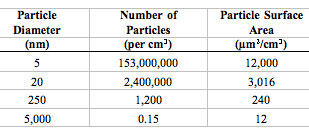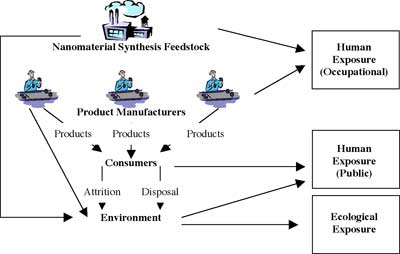Not enough data
exists to know for sure if nanoparticles could have undesirable effects on the
environment. Two areas are relevant here: (1) In free form nanoparticles can be
released in the air or water during production (or production accidents) or as
waste byproduct of production, and ultimately accumulate in the soil, water or
plant life. (2) In fixed form, where they are part of a manufactured substance
or product, they will ultimately have to be recycled or disposed of as waste.
We don’t know yet if certain nanoparticles will constitute a completely new
class of non-biodegradable pollutant. In case they do, we also don’t know yet
how such pollutants could be removed from air or water because most traditional
filters are not suitable for such tasks (their pores are too big to catch
nanoparticles). Citation 18


